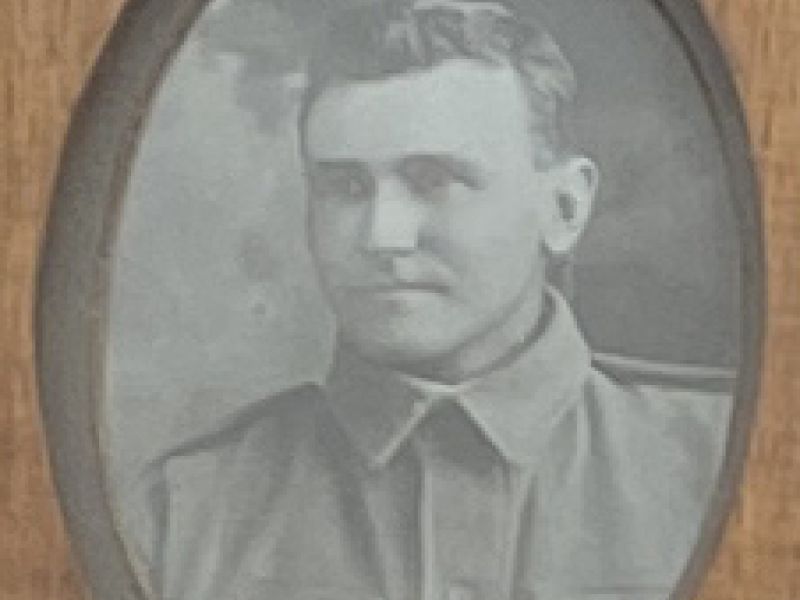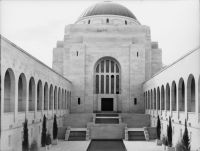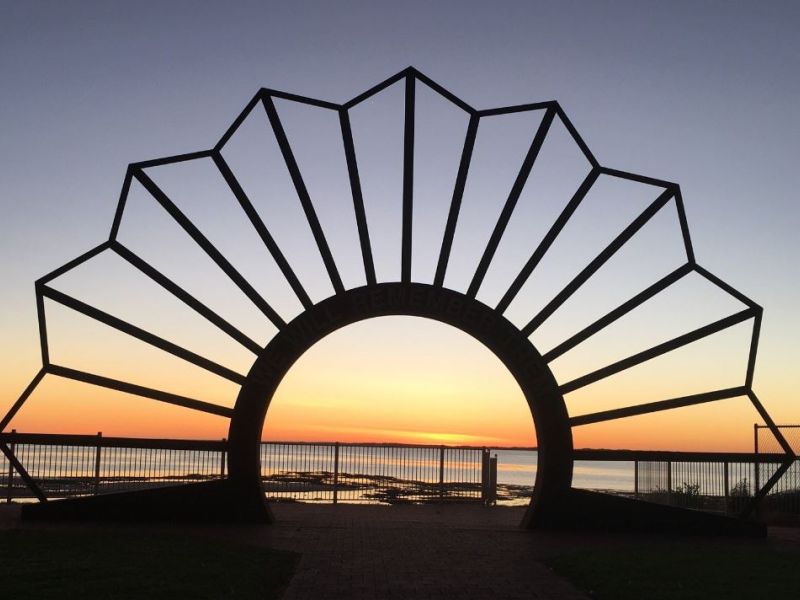Private Charles Leslie King, 16th Battalion, AIF
Charles King was born in 1883 in Wodonga, Victoria, the third child of Charles Thomas William King and Margaret King. His father’s family had moved to Wodonga in the 1850s, where they ran the first hotel established in the new settlement on the Murray.
Generally known by his middle name, Leslie grew up in and around Wodonga and attended Baranduda State School there. His father became a station manager and worked several properties either side of the border, but eventually the family settled in Wodonga, where they were well known and respected. In 1894, when Leslie was 11, his mother died. His father remarried the following year. Leslie and his elder brother Albert followed their father’s line of work, managing large stations. They were not far from each other – Albert at Koordarrie Station and Leslie at Nanutarra Station, both around 70 kilometres south of Onslow in the Pilbara region of Western Australia.
When war broke out in Europe in August 1914, men from around the country answered the call for recruits. By early in the new year, Leslie had decided to enlist. He travelled to Perth and signed on with the Australian Imperial Force on 26 January 1915. Allotted to the 4th Reinforcements for the 16th Battalion, Leslie and his fellow recruits underwent basic training before embarking in Fremantle on 19 April 1915.
Leslie arrived on the island of Lemnos in the Aegean several weeks later. He wrote a letter home which spoke of a great many ships and troops arriving every day. He was glad to have seen some places of interest while passing through Egypt, writing, “I might never have the chance again.”
Fighting on Gallipoli had been underway for nearly six weeks by the time Leslie and the other reinforcements landed on 2 June. He was assigned to the 16th Battalion’s A Company, which had lost many men. It was summer and the heat, flies and poor sanitation made for truly miserable conditions. Diseases such as dysentery and enteric fever multiplied alarmingly.
With the campaign in stalemate, the allies were preparing for a big attack to break out of the beachheads. It would be a tough task, as the Turks held the high ground. The 4th Brigade, which included the 16th Battalion, was to capture the ground between Hill 971, the highest point on the Sari Bair Ridge, and Chunuk Bair. They moved out during the night of 6 August, but progress was slow and they dug in on the ridge below the objective. The brigade was ordered to press on the next day, but the advance fell into chaos as the men lost their bearings and ended up well short of Hill 971. Another push on 8 August met a withering hail of rifle and machine-gun fire. The Australians never got close to their objective, and suffered heavy casualties. The 4th Brigade was forced to withdraw.
By 10 August the 16th Battalion was holding the line at Number 1 Outpost, in the area between the Anzac and Suvla positions. The Turks counter-attacked that day and regained the high ground on Sari Bair Ridge, but the 16th Battalion helped to stop them reaching the sea. There they held on, but the trenches were not well sited and men were exposed to enemy fire. It was likely an enemy machine-gun bullet or a shot from a sniper claimed Leslie King’s life that day.
Leslie’s remains were either not recovered or not identified, and today he is commemorated on the Lone Pine Memorial at Gallipoli. He was 31 years old.
- AWM Roll of Honour https://www.awm.gov.au/collection/R1641787

 Australian War Memorial
Australian War Memorial